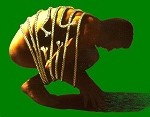 Do you get enough sleep? Are there ways to get more?
Do you get enough sleep? Are there ways to get more?
The latest Sleep Poll conducted by the National Sleep Foundation says that patients with pain are typically operating on a sleep deficit. That is, those who suffer chronic or acute pain report that they regularly sleep for less than they think they need. When asked to quantify their sleep deficits, the average deficit is 42 minutes.
The study indicates that the sleep deficit can be attacked, but it takes motivated sleep behaviors. “Taking control of your sleep by being motivated, setting a routine bedtime and creating a supportive sleep environment are relevant even for those with pain,” said David Cloud, CEO of the National Sleep Foundation.
Sleep issues affect many adults at various times in their lives, but has the greatest impact on those with chronic pain. Twenty-three percent (23%) of chronic pain sufferers say that they have actually been diagnosed with a sleep disorder.
The National Sleep Foundation report also indicates that restorative, sufficient sleep is another indicator of good health. As you might expect, those whose health is good tend to report better sleep while those who have health concerns tend to report poorer sleep. And to add insult to injury, those who are at highest risk for developing chronic pain reported significant sleep deficits.
If you are running at a sleep deficit, what can you do?
- Prioritize getting better sleep, moving it to do your to-do list. Understanding that you need to have a bedtime that allows you to get seven to nine hours of sleep is key.
- Create bedtime routines that will bring you success. Go to bed in your bed at a reasonable bedtime. Unplug from all screens, both small and large. Switch to old-fashioned books before bed, the less stimulating the better.
- Evaluate your sleep environment and make changes that work. People in pain tend to blame environmental aspects on their poor sleep. They tend to be more irritated by the condition of the mattress, the temperature, too much light or ambient noise. If these bother you, take steps to improve them, whether it means investing in new bedding, purchasing a fan, getting earplugs or eyeshades, soundproofing your environment or adding white noise into your bedroom environment.
- Healthy lifestyle choices beget better sleep. Choose more healthful food options, exercise regularly, limit or quit smoking and reduce alcohol intake.
The complete 2015 Summary of Findings report can be downloaded at http://sleepfoundation.org/sleep-polls-data/2015-sleep-and-pain. The National Sleep Foundation releases its yearly poll to coincide with National Sleep Week, which occurs just prior to Daylight Savings Time.






